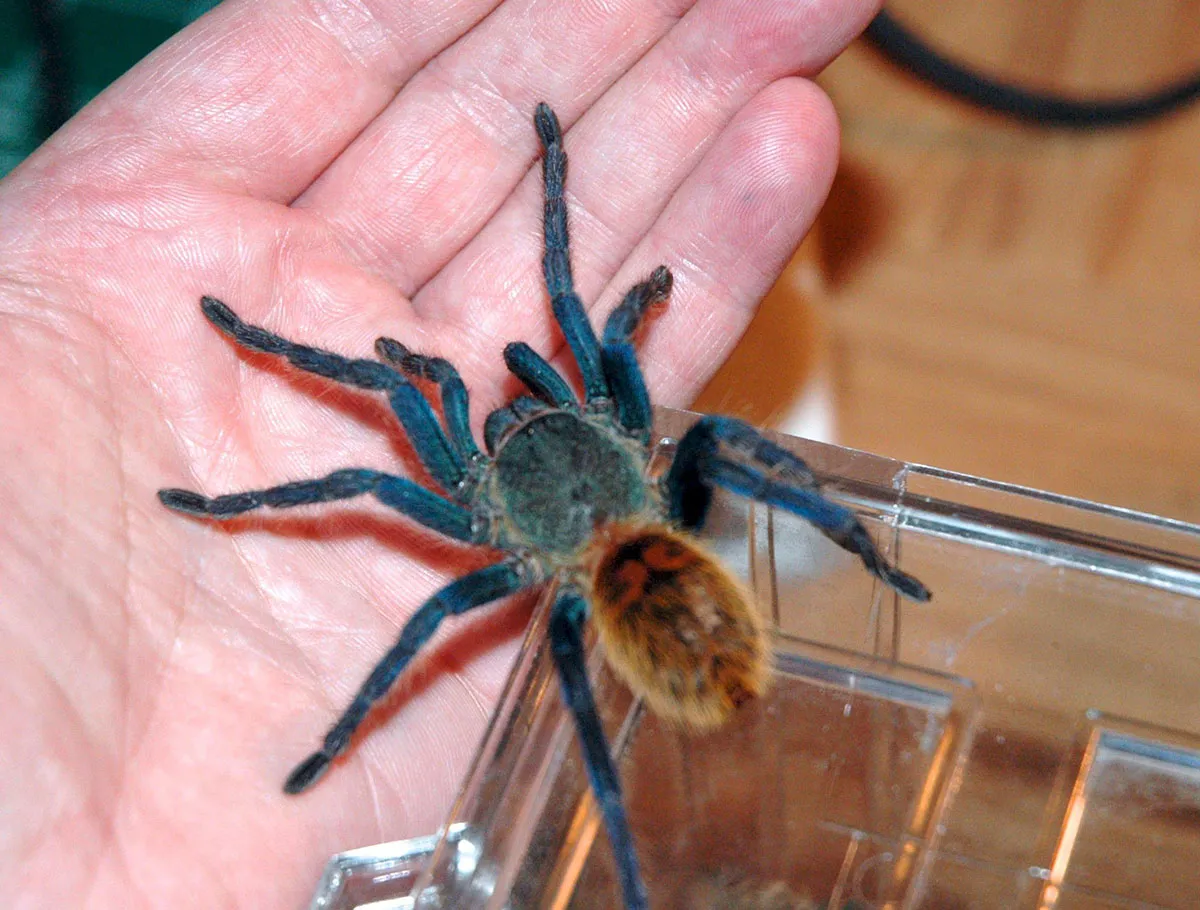Creating a suitable habitat for your Green Bottle Blue (GBB) tarantula is crucial for its health, well-being, and longevity. These stunning arachnids, known for their vibrant blue coloration, thrive in specific environmental conditions that mimic their natural habitat. Building the perfect enclosure involves careful consideration of size, substrate, temperature, humidity, and enrichment. This comprehensive guide will walk you through each step, ensuring you provide your GBB tarantula with a comfortable and stimulating home.
Choosing the Right Enclosure
The enclosure is the foundation of your GBB’s habitat, so choosing the right one is the first and most important step. The size and type of enclosure will directly impact your tarantula’s comfort, behavior, and overall health. A poorly chosen enclosure can lead to stress, molting problems, and even injury. Consider the adult size of your tarantula and its natural behaviors when selecting an enclosure. A well-designed enclosure provides adequate space for movement, climbing, and burrowing, while also allowing for proper ventilation and easy maintenance. Remember, a happy tarantula is a healthy tarantula, and a well-chosen enclosure is the first step towards achieving that.
Enclosure Size and Type
The size of the enclosure is critical, as GBB tarantulas are arboreal, meaning they prefer to climb. A good rule of thumb is to provide an enclosure that is at least three times the tarantula’s leg span in width and height. A taller enclosure is better than a wider one, as it allows for climbing and the creation of webbing. A smaller enclosure can restrict movement and cause stress. A larger enclosure is beneficial as long as the tarantula can easily find food and water. The type of enclosure also matters. Consider ease of access for maintenance, such as a front-opening or top-opening enclosure with a secure lid to prevent escape.
Glass vs. Acrylic Enclosures

Both glass and acrylic enclosures have their pros and cons. Glass enclosures are generally more affordable and scratch-resistant, making them a good choice for beginners. However, they can be heavier and may not retain heat and humidity as well as acrylic. Acrylic enclosures are lighter, provide better insulation, and offer superior clarity, allowing for better viewing of your tarantula. They are also more resistant to shattering, making them a safer option. However, acrylic can scratch more easily than glass. Ultimately, the choice depends on your budget and personal preference, but both are suitable options for a GBB tarantula.
Ventilation Importance
Proper ventilation is crucial to prevent the buildup of stale air, mold, and bacteria in your GBB’s habitat. Adequate airflow helps regulate humidity levels and reduces the risk of respiratory issues. The enclosure should have ventilation holes or mesh screens, preferably on the sides and top, to allow for cross-ventilation. Avoid enclosures with only top ventilation, as this can lead to stagnant air and poor humidity control. Ensure the ventilation is secure enough to prevent escape, but still allows for good airflow. Regularly monitor the enclosure for signs of excessive condensation or mold growth, which may indicate insufficient ventilation.
Substrate Selection
The substrate serves multiple purposes, including providing a surface for the tarantula to walk on, absorbing waste, and helping to maintain humidity levels. The right substrate is essential for the health and well-being of your GBB. Incorrect substrate choices can lead to problems such as mold growth, difficulty molting, and respiratory issues. Selecting the proper substrate requires considering factors like water retention, drainage, and the tarantula’s natural behaviors. Choosing a substrate that mimics the tarantula’s natural environment is also critical to ensuring it feels comfortable and at home.
Ideal Substrate Materials
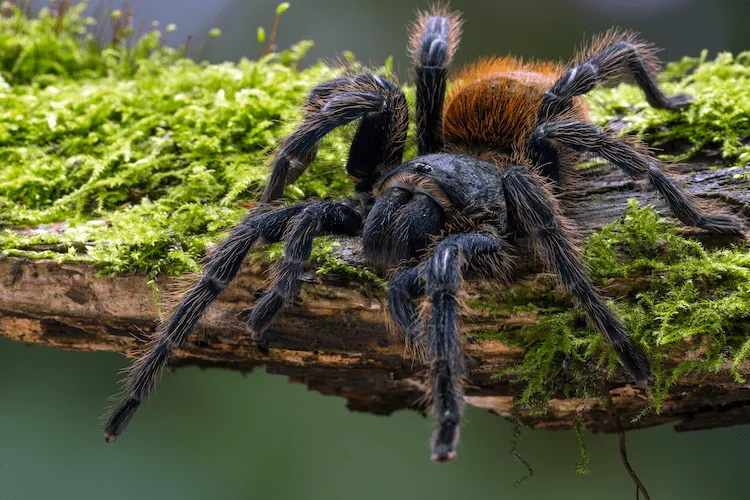
A suitable substrate for a GBB tarantula should retain moisture while allowing for good drainage. A mix of substrates often works best. Popular choices include coco fiber, peat moss, and vermiculite. Coco fiber is an excellent choice as it retains moisture well, is readily available, and is relatively inexpensive. Peat moss offers similar properties and can contribute to a more naturalistic appearance. Vermiculite helps with moisture retention and aeration, preventing compaction. Avoid substrates that are dusty or contain harmful chemicals. The most common mix is coco fiber, peat moss, and a bit of sphagnum moss for added humidity retention.
Substrate Depth and Layering
The depth of the substrate is important for maintaining humidity. A depth of 2-4 inches is generally sufficient for a GBB. The depth should allow for some burrowing and provide a comfortable environment. A deeper substrate layer can also help to moderate temperature fluctuations. You can layer the substrate with a drainage layer at the bottom, such as a layer of gravel or clay pebbles, to prevent waterlogging. This will help with drainage and prevent the growth of mold or fungus. Over time the substrate should be monitored and changed or spot-cleaned to prevent the build-up of waste.
Temperature and Humidity Control
Maintaining the correct temperature and humidity levels is critical for the health and well-being of your GBB. These factors directly influence the tarantula’s metabolism, molting, and overall activity. GBBs thrive in a specific range of conditions. Providing the right temperature and humidity can help prevent health issues and ensure your tarantula lives a long and healthy life. Proper monitoring and adjustments are essential to maintain the ideal environment.
Heating Methods
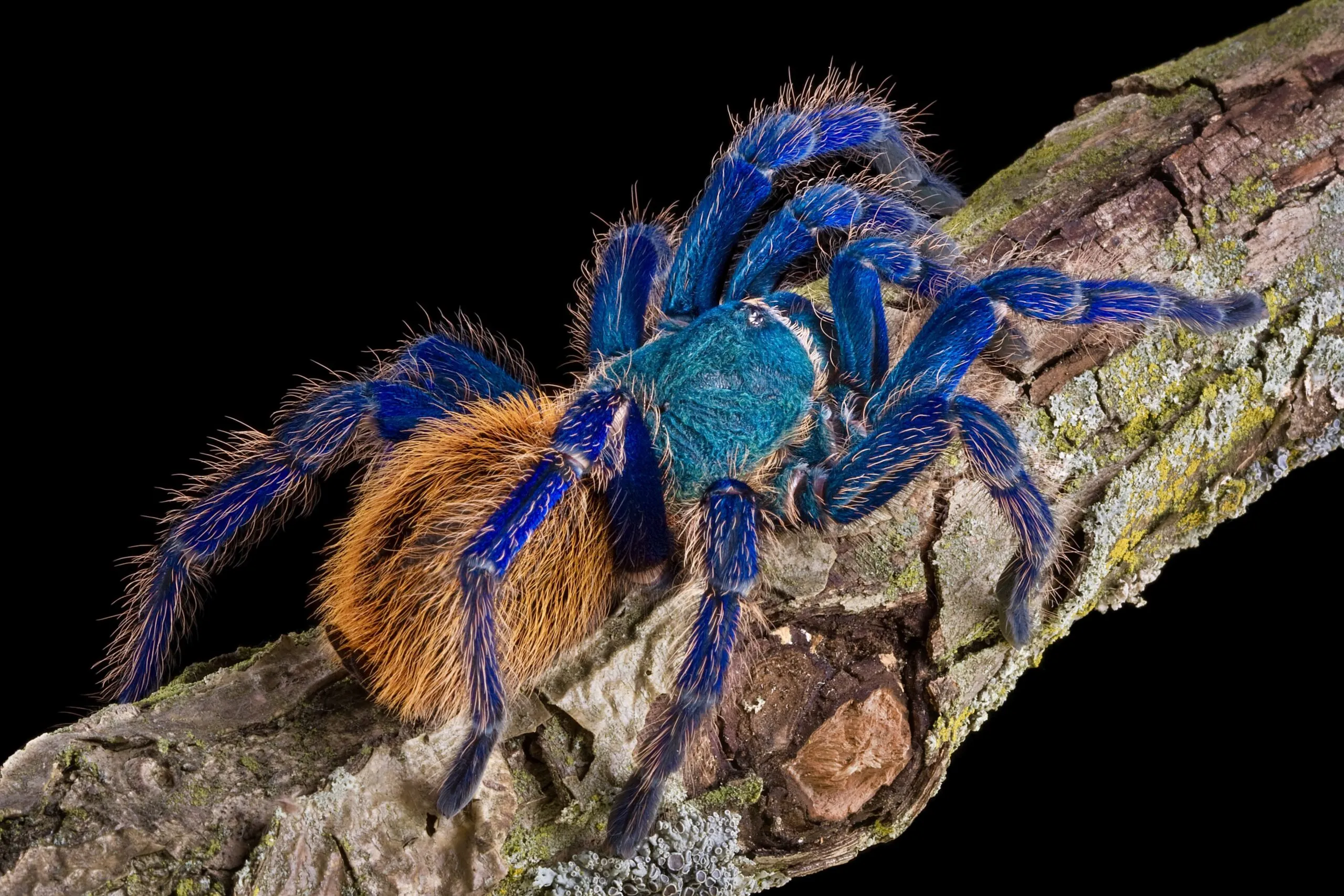
GBB tarantulas prefer a temperature range of 75-85°F (24-29°C). The easiest way to achieve this is by using a heat mat or a ceramic heat emitter (CHE). Heat mats can be placed on the side or back of the enclosure, but never directly under the enclosure, as this can overheat the substrate and harm the tarantula. CHEs can be mounted above the enclosure and are a good option for larger enclosures, ensuring even heating. Always use a thermostat to regulate the temperature and prevent overheating. Avoid using heat lamps, as they can dry out the enclosure and are not suitable for maintaining humidity.
Maintaining Humidity Levels
Humidity levels for a GBB tarantula should be maintained between 65-75%. This can be achieved by misting the enclosure with a spray bottle, especially during molting. The frequency of misting will depend on the humidity levels, the ventilation of the enclosure, and the substrate. A hygrometer is essential for monitoring the humidity levels and making adjustments. Ensure that the substrate is moist but not waterlogged. A water dish also helps to maintain humidity. Avoid over-misting, as this can lead to mold growth and other problems. Regularly monitor humidity and adjust as needed to maintain the ideal range.
Essential Habitat Decorations
Providing your GBB tarantula with decorations is not only aesthetically pleasing but also essential for its well-being. Decorations offer hiding places, stimulate natural behaviors, and enrich the tarantula’s environment. Incorporating appropriate decorations can reduce stress and promote a sense of security. Choose decorations that are safe, non-toxic, and easy to clean. Ensure the decorations are appropriate for the tarantula’s arboreal lifestyle and provide vertical climbing surfaces.
Hiding Places and Foliage
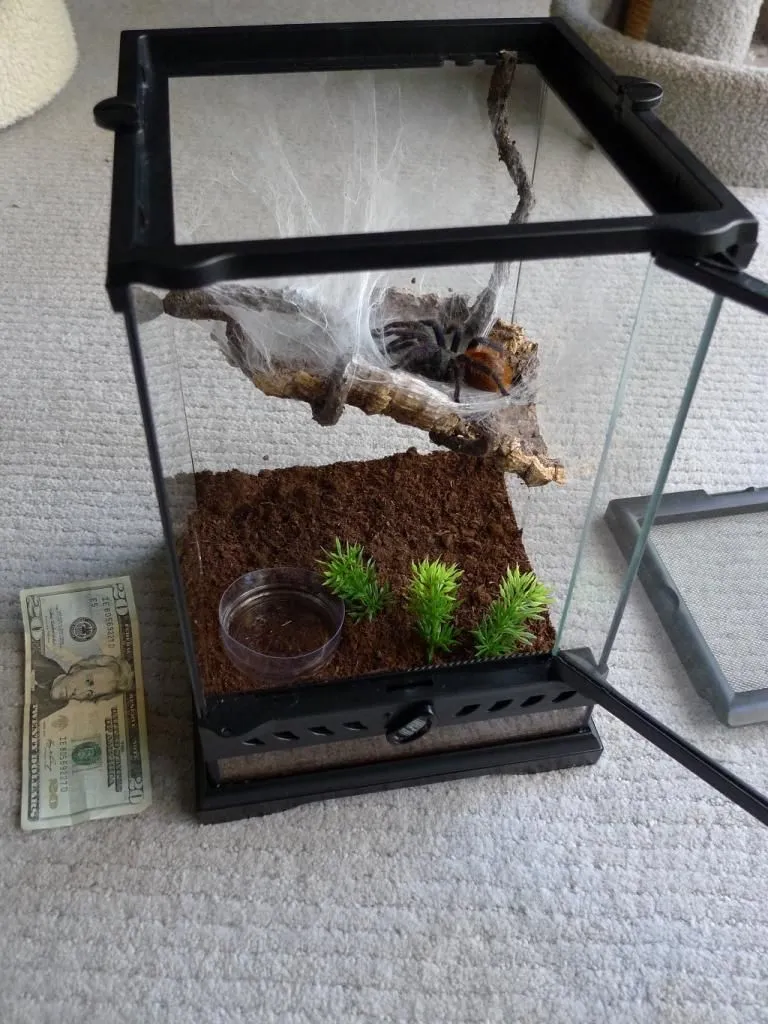
GBBs are naturally shy and like to have secure hiding places. Provide a hide, such as a piece of cork bark, a hollow log, or an artificial hide. The hide should be large enough for the tarantula to comfortably retreat into but not so large that it feels exposed. Artificial foliage, such as silk plants or artificial vines, can also be added to provide cover and create a more naturalistic environment. Arrange the foliage and hide to create a visually appealing and functional habitat. Ensure the decorations are securely placed and do not pose any risk of injury to the tarantula.
Water Dish and Placement
A shallow water dish is essential for providing your GBB tarantula with a constant source of fresh water. The water dish should be placed in a secure location where it will not easily tip over. Choose a water dish that is appropriate for the size of your tarantula. The dish should be shallow enough that the tarantula can easily access the water. Regularly clean the water dish and refill it with fresh, dechlorinated water. A water dish also helps to increase humidity levels, so it is a beneficial addition to the habitat.
Feeding and Watering Your Tarantula
Proper feeding and watering are essential components of GBB tarantula care. Providing the correct diet and a clean water source is critical for maintaining your tarantula’s health and ensuring its longevity. The frequency and type of food will depend on the age and size of the tarantula. Observing your tarantula’s feeding habits and adjusting its diet as needed is important. A well-fed and hydrated tarantula is a healthy tarantula, so proper care is essential.
Food and Water Schedule
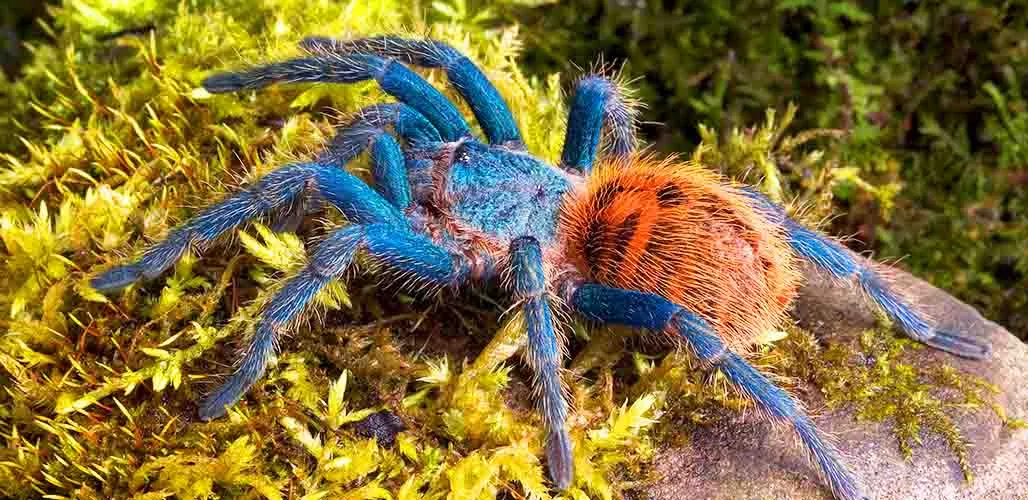
GBB tarantulas are insectivores, meaning they primarily eat insects. Suitable food sources include crickets, mealworms, roaches, and other commercially available feeder insects. The frequency of feeding depends on the tarantula’s size and age. Spiderlings should be fed 2-3 times a week, while adults can be fed once a week or every other week. Remove any uneaten food within 24 hours to prevent mold growth and maintain a clean enclosure. Always provide a clean water source in a shallow dish. Water should be available at all times.
Cleaning and Maintenance
Regular cleaning and maintenance are necessary to keep your GBB’s habitat clean, healthy, and safe. This includes removing waste, replacing the substrate, and ensuring the overall cleanliness of the enclosure. A clean habitat helps to prevent disease, reduces odors, and creates a more pleasant environment for both you and your tarantula. Following a regular cleaning routine is key to long-term health and well-being.
Regular Cleaning Routine
Spot clean the enclosure regularly, at least once or twice a week. Remove any uneaten food, fecal matter, and molted exoskeletons. Use a soft brush or tongs to remove waste without disturbing the substrate excessively. Clean the water dish and refill it with fresh water every few days. Regularly inspect the enclosure for signs of mold or excessive condensation, which may indicate a need for increased ventilation or substrate replacement. Maintaining a consistent cleaning routine is essential for a healthy and thriving habitat. Observe your tarantula’s behavior and the condition of the enclosure to assess when more thorough cleaning is required.
Substrate Replacement
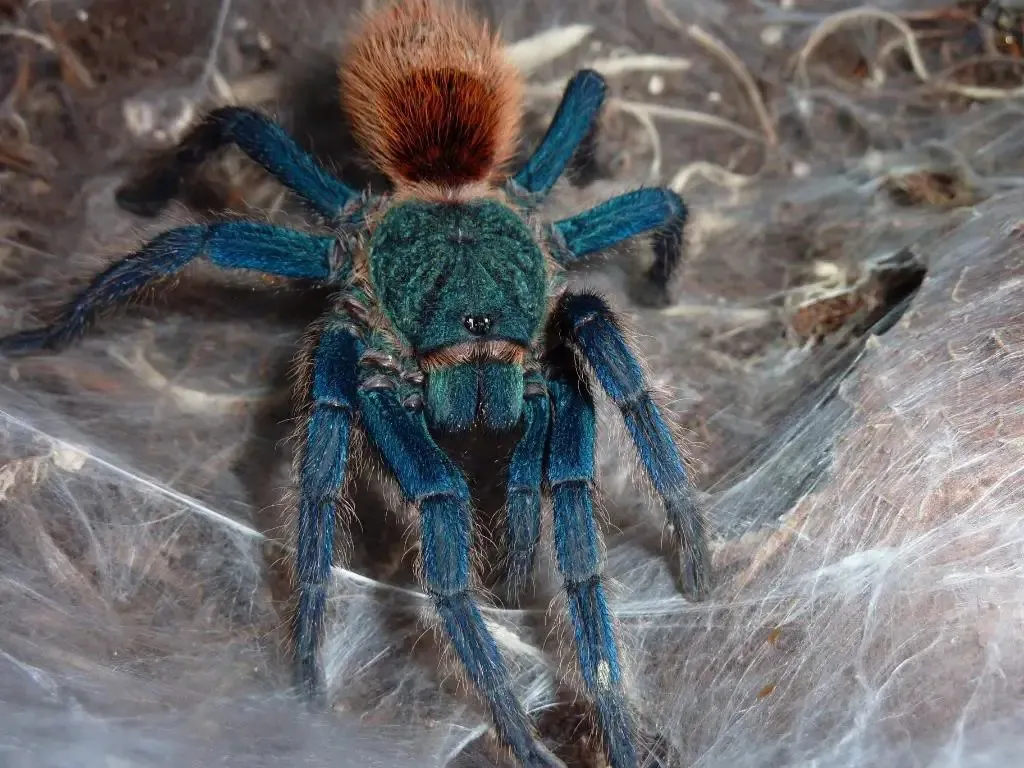
The substrate should be replaced periodically, depending on the type of substrate and the size of the enclosure. A good rule of thumb is to replace the substrate every 6-12 months. However, if the substrate becomes excessively soiled, compacted, or moldy, replace it sooner. When replacing the substrate, remove the tarantula and place it in a temporary enclosure. Discard the old substrate and thoroughly clean and disinfect the enclosure before adding new substrate. Allow the enclosure to dry completely before returning the tarantula. Replacing the substrate ensures a clean and healthy environment.
Creating the ideal habitat for your Green Bottle Blue tarantula is a rewarding experience. By following these guidelines, you can ensure your tarantula has a comfortable, safe, and stimulating environment in which to thrive. Remember to regularly monitor the enclosure, adjust conditions as needed, and enjoy the fascinating world of your GBB tarantula. With proper care and attention, your GBB will flourish for many years to come.
